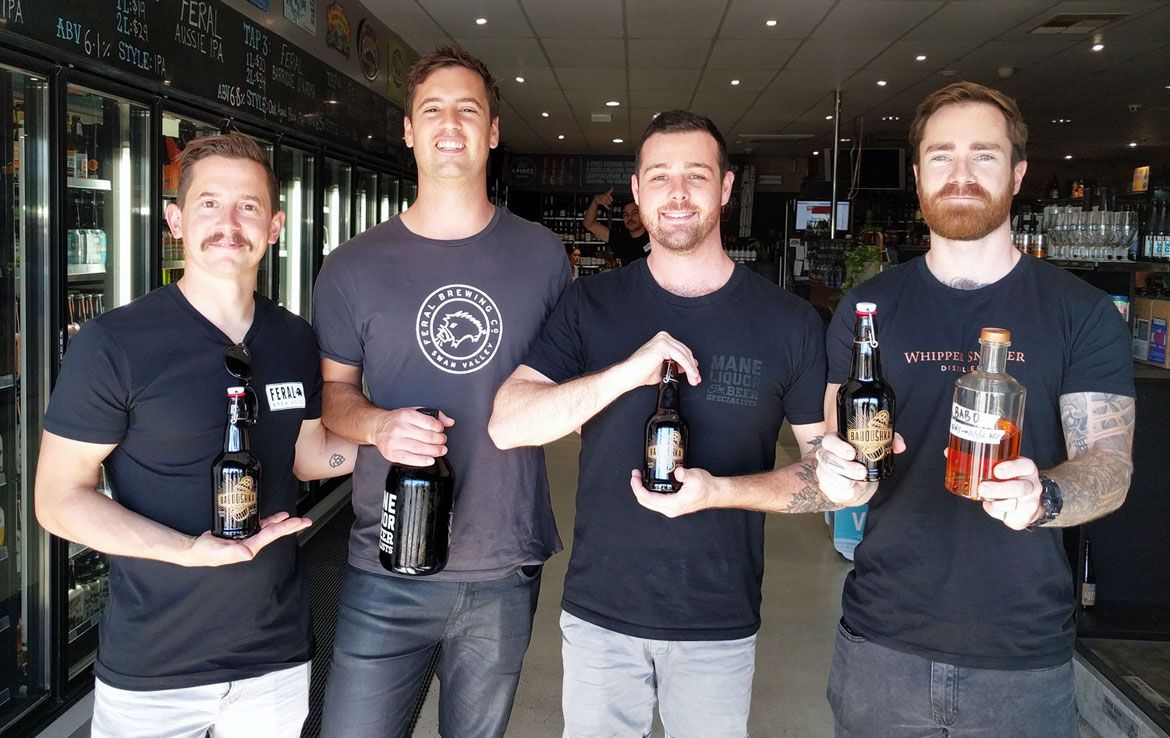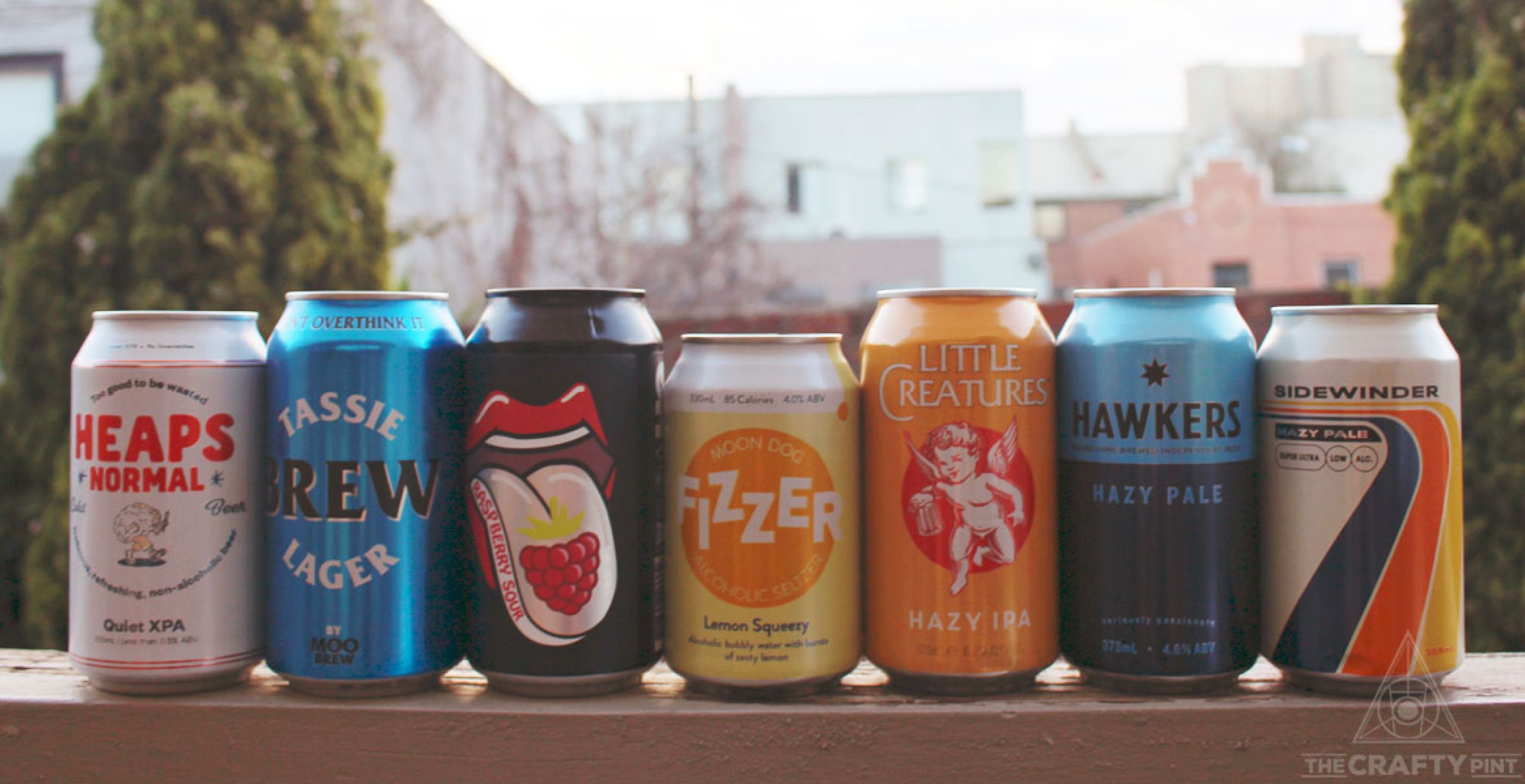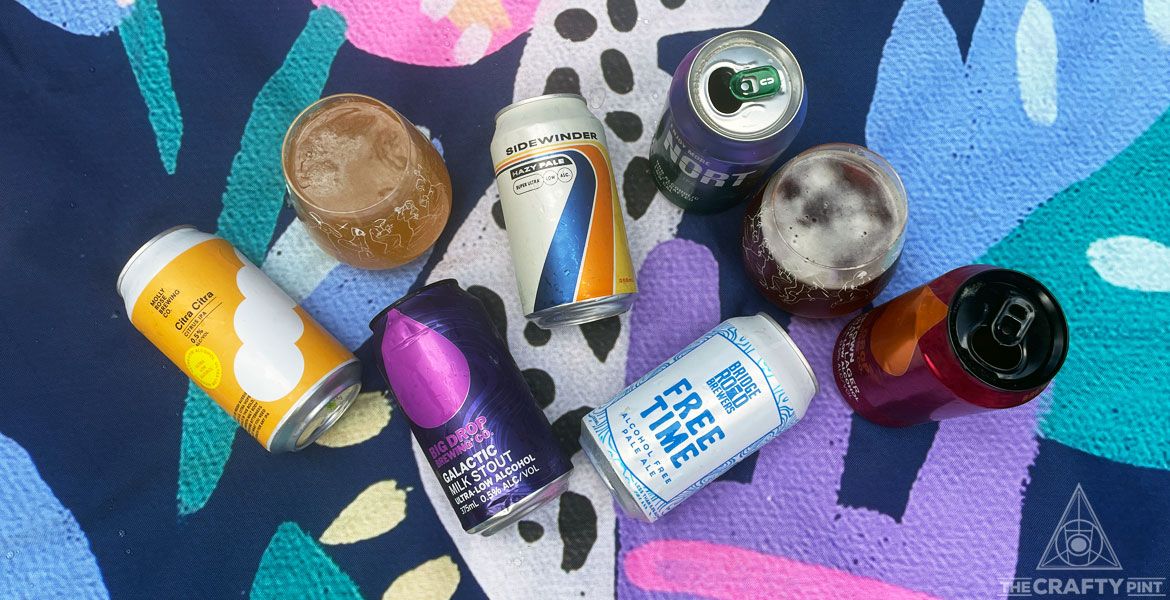There's always been a natural ebb and flow to the beer world. Its equivalent of a circadian rhythm is one that sees consumption fall away and trend towards the dark in winter, before bursting back to life through spring and into summer.
With 2021 the second year in which Australian brewers and venue operators have had to grapple with the existential threat of COVID-19, there will be many hoping the upcoming "bursting back to life" is an explosion of nuclear proportions. Repeated, and in some cases ongoing, lockdowns have many businesses clinging on by their fingernails and in desperate need of a bumper beer season.
At the same time, the beer landscape – indeed the wider drinks landscape – has never been so complex or full of choice for the drinker. In past years, you'd have found many brewers spending the later months ensuring tanks, kegs and cans (or bottles if you go back far enough) were filled with their flagship beers – mostly like a pale or summer ale, maybe a lager. And, while such beers will undoubtedly feature prominently as the mercury rises and consumption increases, there is much else to consider.
The past couple of years have seen alcohol-free beers make their way from the fringes to become some of the top-selling SKUs at retailers across the country. The desire among many to drink mindfully has fed into the rise of seltzers and low carb beers too. And hazies – be that pales or IPAs – continue to laugh in the face of those who felt such beers would be a fad when NEIPAs first appeared here.
With Stone & Wood today targeting what they call the “contemporary” beer market with the launch of the "unashamedly" mainstream 3.5% Green Coast Lager, and a growing number of smaller independents trying to find ways of sustainably offering lower cost cartons to budget-conscious drinkers, or those new to the craft sector, there’s plenty of action in the realm of volume-shifters and session beers. And that’s without mentioning easy-going sours…
So, with spring almost sprung, and brighter days hopefully not too far away for those still in lockdown, we invited some industry experts to gaze into their crystal balls and tell us where they think we’ll be spending our money in the warmer months:
- Stone & Wood GM Nick Boots
- Modus Operandi and NORT founder Jaz Wearin
- Josh Daley of Mane Liquor
- Tif Waldron of Mighty Craft, and Pink Boots Society Australia President.
HAZE FOR DAYZ

It will surprise nobody among our readership to see hazy beers appear in this article. We ran a big feature and a blind tasting on hazy pales at the start of the year, and the quality and breadth of that part of the craft beer market has only grown. What’s more, after hazy pales came to prominence once hazy IPAs had laid down the foundations, easy-going hazy IPAs are among our interviewees’ tips for the top.
Josh says he typically looks at what the staff at Mane Liquor, one of the country’s leading bottleshops for well over a decade now, are drinking, as they tend to be all over trends before the public. And among the beers they’re reaching for now are hazy pales and lower ABV hazy IPAs.
“There’s a bunch of WA breweries adding hazy pales to their core range in the next three to four months,” he says, a move that would follow the pattern we saw on the east coast in 2020.
“We haven’t seen that many of them hit the market here yet, as it’s been all big IPAs and double IPAs and big NEIPAs. Philter do an amazing one and it’s one of my favourite beers in the shop.” (Which is saying something given the huge range at Mane.)
“Hazy IPAs won’t be going anywhere,” is how Jaz sees it; the Modus team are certainly backing that horse with their Lost In The Fog set to return as a beefed up IPA after faring well as an XPA in its original incarnation.
“People that never considered themselves IPA drinkers are now drinking these low bitterness and big, juicy hop flavour beers and thinking, ‘Oh look, I can drink these now and my taste buds enjoy this'.”
Meanwhile, within the Mighty Craft stable of breweries, of whom Ballistic won new followers with their Hawaiian Haze, Tif says Sauce founder Mike Clarke now sees their Caribbean Fog (a hazy pale) as his flagship.
“We’re doubling down on hazy pales,” she says. “They sell well. People like it. It’s such a good transition into what craft beer can offer.”
UNCOMPLICATED DRINKING

It’s fair to say the past few years have been far from easy. Remember those days when we were wishing the end of the last decade would come quicker as surely better times lay ahead? Didn’t work out so well, did it?
It’s one of the reasons Jaz can see easy-drinking beers become a big player this summer – uncomplicated beers for a complicated time.
“I wouldn’t be surprised to see some of the bigger breweries playing there,” she says, not least with many independents having invested in expansion and thus having tanks that need filling.
In the indie space, only Coopers is bigger than Stone & Wood; indeed, when the Northern Rivers brewers complete work on their next brewery expansion, they will be able to produce as much beer as the Adelaide icon.
Hot on the heels of aligning their Green Coast brand with the Wallabies, it’s one of the reasons behind the launch of their 3.5% Green Coast Lager today: in the hope it will occupy much of the tank space not required for Pacific Ale once the new brewery is online. It sees them making a play for the huge sector of the beer market currently dominated by the likes of Great Northern and XXXX Gold, with Nick pointing out they’ve always seen themselves as a regional rather than craft brewer.
“If you talk about being relevant for our local community and people who love what Stone & Wood is about,” he says, “then, to be honest, we don’t have a beer for the everyday drinker. Stone & Wood have one percent of the market and we think we can go a lot, lot deeper.”
He adds: “We’ve done a lot of modelling, and if we’re going to invest $50/60 million on another brewery – which is a hideous amount of money for a family-owned business – then we need to cover our bases.”

Nick (pictured above) cites the example of New Belgium, a brewing company with whom Stone & Wood’s owners have a longstanding relationship, as an example of what can go wrong; their most recent major expansion took so long, at a time when the US market was rapidly shifting, that they ended up having to sell to Kirin (owner of Lion in Australia), an outcome that left the Stone & Wood team “really spooked”.
“We think we can double Pacific Ale and get to 30 million litres [per annum],” he says, “but it’s naïve to think it will be the poster child for that gateway craft market forever. We owe it to everyone to continue to look for new beers and new styles that might be the next thing.”
While Stone & Wood have the scale and ambition to go after the country’s biggest brands, we’ve seen many smaller brewers add more price-conscious, by-the-slab, everyday beers to their lineups in recent years – a trend that shows no sign of slowing.
“I wonder if it’s where indie brewers need to go,” Nick says. “If we want to be strong and relevant and have the capacity to do funky things like Counter Culture, we can only do that when Pacific Ale and Green Coast are putting through volume.”
Tif offers similar thoughts, pointing out how even Range – known best for their IPAs and other hop forward offerings – are putting ever greater focus onto their lagers.
“If you have somebody who comes into a venue asking for a lager and says they only drink XXXX or Carlton Draught and can give them something that’s not too challenging," she says, "then you can create somebody who can keep buying [your beer] all the time."
BETTER-FOR-YOU BEERS

The rise of alcohol-free beers was already gathering such momentum by late 2020 that we ran a blind tasting featuring more than 20 of them. And there are plenty more available here now – both locally brewed and imported.
Chat to the owners of some of the country’s best known craft beer retailers and they’ll tell you such beers are among their biggest-selling SKUs, with Heaps Normal’s Quiet XPA and the NORT range from Modus Operandi regularly cited, alongside Big Drop from the UK.
According to Josh, while the concept is designed to ensure there are less victims of morning-after hangovers, it’s not a market shift without victims.
“We’ve actually seen a massive decline in sales of mids with the arrival of non-alcoholic beer,” he says.
He estimates Mane Liquor now sells ten times as much non-alc beer as mid-strengths, and believes the reasons goes beyond the health benefits.
“There’s not a huge amount of variety in mid-strengths,” he says. “The majority are session ales, when in non-alcoholic you can get pale ales, milk stout, IPAs, XPA – there’s huge variety.”
NORT, which was brought to life by Modus Operandi co-founder Jaz (pictured above), is as responsible for that variety as anyone else in that space. While she admits adding the Pacific Ale, Tropical XPA and IPA to the original NORT at once almost killed her – especially as they’re about to open their “stunning” Newcastle brewery venue once lockdown eases – she’s glad they did.
“It’s blown my mind,” she says of the brand’s success. “It’s just picking up momentum and going into people’s fridges all the time.
“People can drink these and be completely off the booze, or while treating themselves to bigger ABV beers and still be mindful.
“It will be interesting to see if other brewers get into non-alc.”
It’s not just zero or lower alcohol beers being marketed at the mindful drinker or those focused on well-being – what Nick calls a “mega trend that isn’t going away.” Tif (pictured below) says the Mighty Craft team has high hopes for a couple of low carb, low calorie beers within their stable of craft producers, including the just-released Low Ha from Ballistic.
“You’re looking at a full-sized can of beer that’s 100 calories or less,” she says, “and that, to me, is so much better than low carb. That Ballistic beer tastes like a really nice pale ale, but is 100 calories a can."
She references a growing number of beers in the US calling out the low calorific content of the liquid and the longstanding success of Burleigh’s Big Head here, and says that with seltzers only increasing awareness in this area: “It makes total sense that would be the next thing.”
FEELING FRUITY

A little under three years ago, we took at look at the rise of mid-strengths in the craft beer world and, within that, talked of the growing interest in session strength sours within the craft beer world. While the above suggests mids are losing out to the growing non-alc sector, easy-going sours – fruit-enhanced or dry-hopped, rather than the more complex and rewarding barrel-aged and blended type – look set to remain a key part of warm weather drinking.
They’re not the only fruity refresher to be capturing drinkers’ affections right now, either. While most, but not all, seltzers producers have suffered the sort of winter that makes the drop in beer consumption look like a mere blip, they’re set to fly off shelves again as temperatures rise.
That said, they may not be flying off shelves at the expense of beer.
“What I’m noticing is that the guys that drink beer, they’re not buying seltzers,” Josh says. “It’s a different crowd – a completely different market.
Nick sounds a word of caution, however. While seltzers continue to boom in the States, where they’ve been around rather longer than here, he points out that the US never had an established RTD market like we do here in Australia. With RTD producers already reacting and delivering zero sugar options – and having deep roots in the local market – he suggests the new kid on the boozy soft drink block – which includes the Sunly brand that sits alongside Stone & Wood in the Fermentum Group – may not enjoy too long in the sun.
“We’re still optimistic there’s two big summers ahead, but how it evolves beyond that is anyone’s guess,” he says, adding: “Anyone who expands fermentation capability on the back of seltzer needs to be careful they don’t find themselves with a heap of empty tanks in a couple of years.”
They’re looking even further ahead when it comes to a hoped-for boom time for their 2.7 percent ABV East Point sour, figuring it will be a few years before the wider market is ready for such beers. But Josh reckons fruity sours “will start kicking” this summer, in keeping with what he witnessed in 2020/21.
Jaz says it’s a space in which Modus Operandi are increasingly playing too.
“We’re exploring more non-traditional fruits,” she says. “It doesn’t have to be lime or watermelon. It’s such a great summer style.”
HERE’S TO A BIG SUMMER COMEBACK

It goes without saying, of course, that brewers of hoppy pales and tropical summer ales will be filling their tanks and cool-rooms with such beers as summer approaches. As Nick points out, they still can’t meet demand from new Pacific Ale drinkers, and the fact the likes of 4 Pines, Coopers and now Little Creatures have a beer of the same name in their lineup confirms the demand in that area goes well beyond the original.
But will there be surprises beyond the above this summer? Josh hopes to see farmhouse pales – such as One Drop’s recent release of that name – enjoy some time in the spotlight in the hope it helps pave the way for saisons and other refreshing farmhouse styles to finally emerge from their tiny, tiny niche.
He also expects to see hoppy lagers and pilsners go well, especially in WA where IPLs from Beerfarm and Eagle Bay are well established staples and others like Rocky Ridge are entering the space. Tif is with him on that front too; “The uptake in really good craft lagers has been really exciting for me,” she says.
Of course, such is the diversity of the beer world today, 10 percent ABV oat cream DIPAs and pastry stouts from the country’s most hyped brewers will no doubt continue to shift even at the height of summer.
But what about you? Are your habits changing? Does alcohol-free beer or well-being come into your thoughts when stocking up for a session? Let us know.
Either way, here's hoping for a return to something like normality for hospo across the entire country, and a happier, healthier beer industry in 2022 and beyond.

















